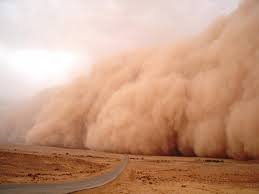Analysis of the dust event in the recent decade (2002- 2012): Mashhad case study
Keywords:
dust, statistical analyses, synoptic maps, NOAA website, MashhadAbstract
Dust is one of the atmospheric phenomenawith undesired bio-environmental outcomes. Due to Iran’s geographical situationin arid and semi-arid parts of the world, this country is repeatedly exposed tosynoptic and local dust systems. This study investigates the initiationconditions and the origin of dust systems of Mashhad during a statisticaldecade (2002- 22012).The results of statistical analysis show thatsummer, especially June with 29 days has the highest abundance of the dustevent phenomenon in Mashhad. Statistics has shown a decreasing trend of thisphenomenon in recent years. Of course it is important to mention that thisevent has increased from 2012 to the previous year, i.e. 2011. In addition, theabundance of the days of the dust event phenomenon with intra-regional andlocal origin is higher than its occurrence with extra-regional one. Finally inorder to synoptically analyze this phenomenon, the effective factors on thisatmospheric phenomenon were investigated typically with the help of the mapsreceived from the weather forecast site. For the analysis, two waves were selected due to the dispersionof the area .and its deployment in the region. The dates of the phenomenon wereselected as July 9th 2009 as the extra-regional factor and March 15th2008 as the intra-regional one. Results show that in July 9th forthe extra-regional factor, there was a fairly moderate atmosphere on theregion, while on the surrounding regions, the placement of a low-pressureatmosphere, reinforcement of the instability conditions and cutting the upper-layerwinds has led to the weather calmness and therefore the occurrence of the dustphenomenon and its placement on the region. By investigating the maps of theatmosphere’s various surfaces on March 15th with the intra-regionalfactor, there were different conditions in comparison with the July 9th.At the time of the occurrence of the phenomenon on March 15th, theconditions were instable on various surfaces from the Earth to theover-atmosphere surfaces, while there was a fairly moderate atmosphere aroundthe regions. This instability on the regions leads to the air movement and theregion’s aridness makes local dust.References
Alijani, B., 1997. the Iranian climate, Tehran Payam-e-Noor University publications. Engelstadler, S., 2001. Dust storm frequencies and their relationships to land surface conditions, Freidrich-Schiller university press .Jena. Germany. Habibi Nokhandan, M., 1997. weather and architecture with emphasis on the middle-East architecture (translation). Geogr. Res. seas. art., No. 64.
Hossein Zadeh, S.R., 1997.Sistan’s 120-day winds. Geogr. Res. seas. art., No. 64.
Hosseini, S.B., 2000. synoptically study of severe storms in Tehran, M.S. thesis, Assistant professor:
Mohammad Kheirandish, Tarbiat-e-Modarres University.
Nouhi, A., 1997. General weather forecast (translation). Tehran sci. culture. publicat.
Sabet Dizavandi, L., 2012. time changes analysis and prediction of temperature and rainfall in Mashhad,
M.S. thesis, Islamic Azad University. branch Tehran Sci. Res.
Zolfaghari, H., Abedzadeh, H., 2005. synoptically analysis of dust system in the Western Iran. Geogr. dev.
j., No. 6.
Zolfaghari, H., Masoompour, J., ShameganMehr, S., Ahmadi, M., 2011. integrated investigation of dust
storms in the Western parts of Iran during 2005-2009. Geogr. env. plan. J., No. 3.

Published
How to Cite
Issue
Section
Copyright (c) 2020 Fatemeh Jalali Saffar, Mohammad Golkar, Mohammad Javad Safaee

This work is licensed under a Creative Commons Attribution-NonCommercial-NoDerivatives 4.0 International License.



